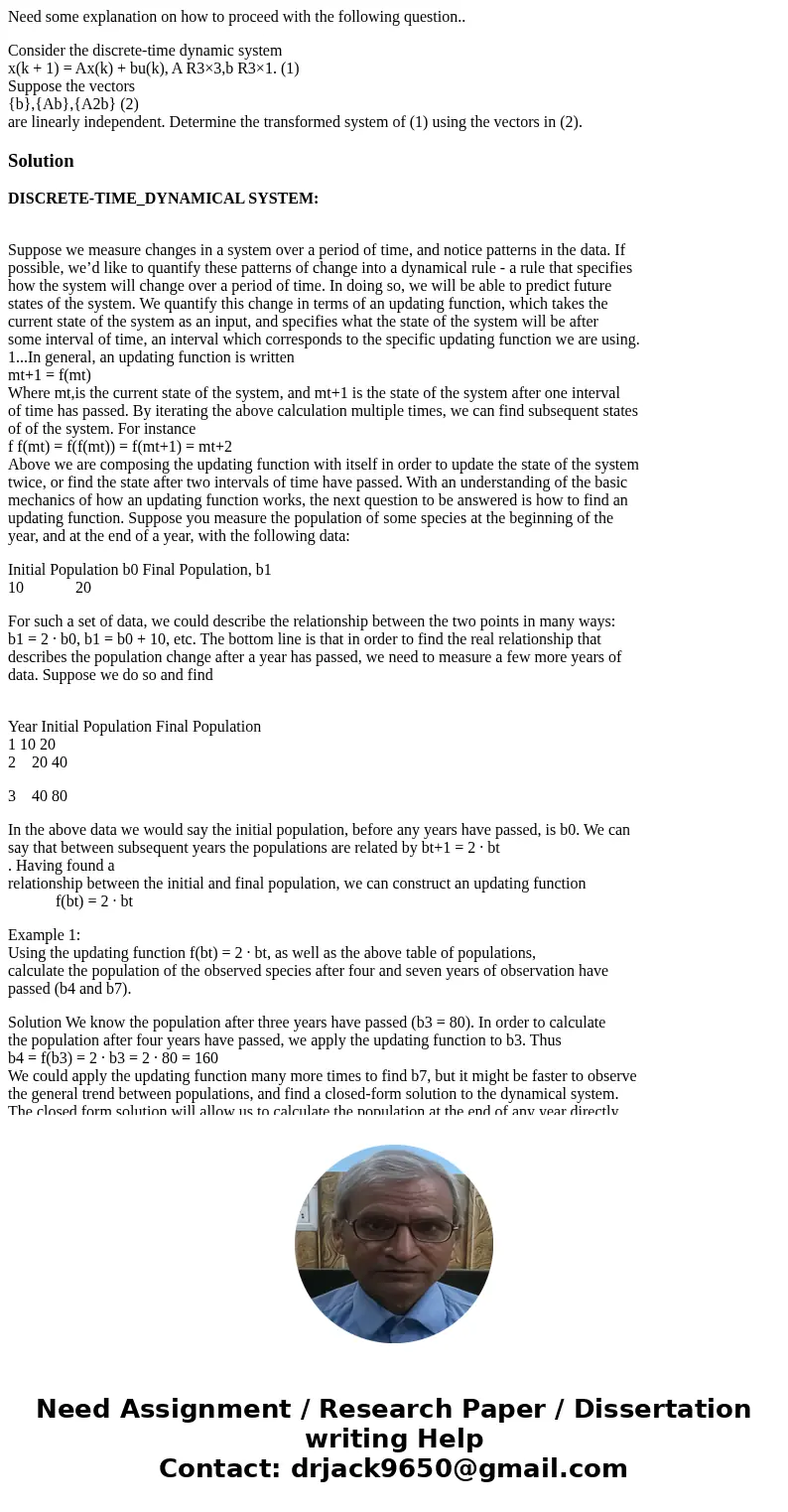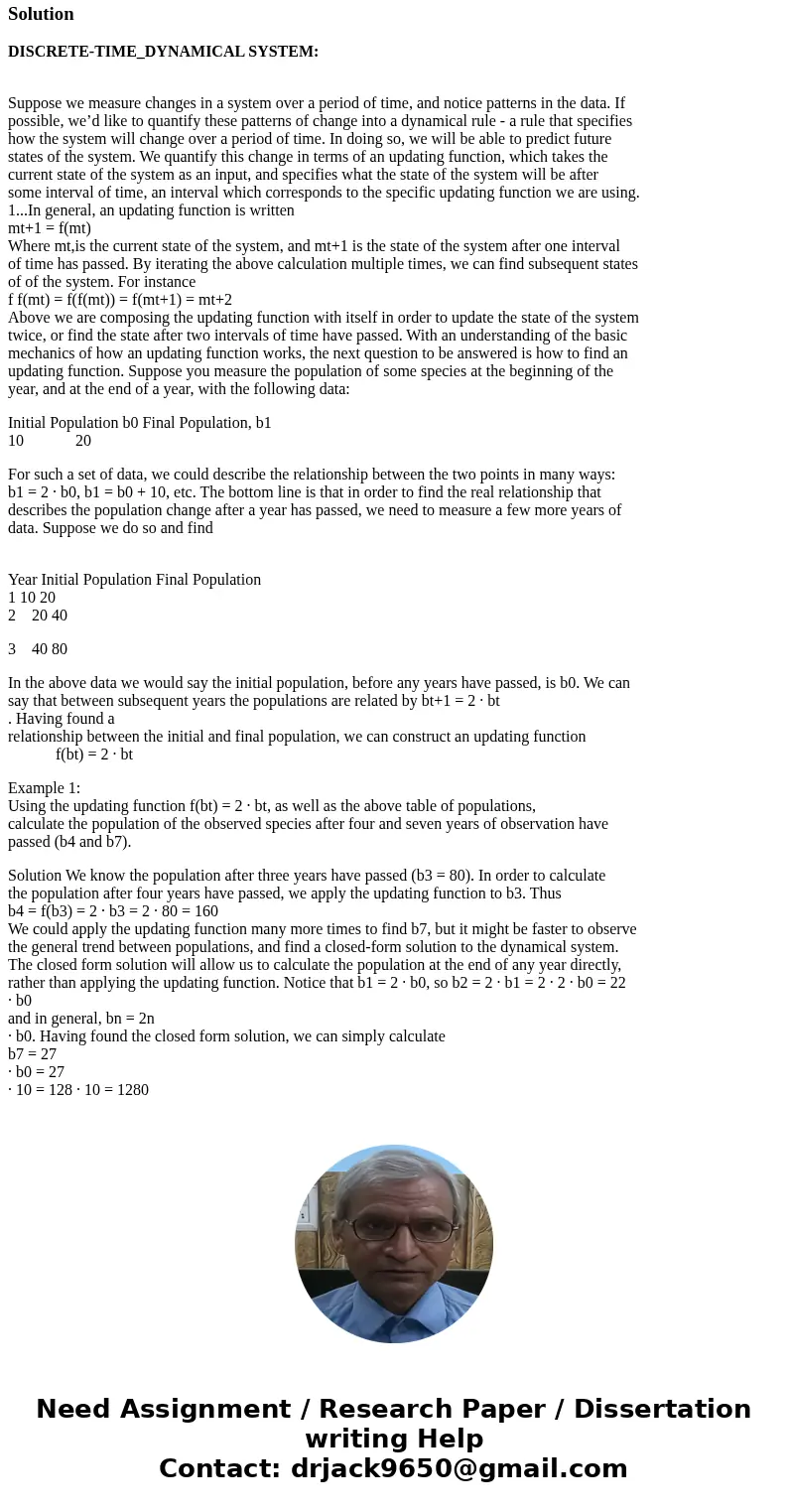Need some explanation on how to proceed with the following q
Need some explanation on how to proceed with the following question..
Consider the discrete-time dynamic system
x(k + 1) = Ax(k) + bu(k), A R3×3,b R3×1. (1)
Suppose the vectors
{b},{Ab},{A2b} (2)
are linearly independent. Determine the transformed system of (1) using the vectors in (2).
Solution
DISCRETE-TIME_DYNAMICAL SYSTEM:
Suppose we measure changes in a system over a period of time, and notice patterns in the data. If
possible, we’d like to quantify these patterns of change into a dynamical rule - a rule that specifies
how the system will change over a period of time. In doing so, we will be able to predict future
states of the system. We quantify this change in terms of an updating function, which takes the
current state of the system as an input, and specifies what the state of the system will be after
some interval of time, an interval which corresponds to the specific updating function we are using.
1...In general, an updating function is written
mt+1 = f(mt)
Where mt,is the current state of the system, and mt+1 is the state of the system after one interval
of time has passed. By iterating the above calculation multiple times, we can find subsequent states
of of the system. For instance
f f(mt) = f(f(mt)) = f(mt+1) = mt+2
Above we are composing the updating function with itself in order to update the state of the system
twice, or find the state after two intervals of time have passed. With an understanding of the basic
mechanics of how an updating function works, the next question to be answered is how to find an
updating function. Suppose you measure the population of some species at the beginning of the
year, and at the end of a year, with the following data:
Initial Population b0 Final Population, b1
10 20
For such a set of data, we could describe the relationship between the two points in many ways:
b1 = 2 · b0, b1 = b0 + 10, etc. The bottom line is that in order to find the real relationship that
describes the population change after a year has passed, we need to measure a few more years of
data. Suppose we do so and find
Year Initial Population Final Population
1 10 20
2 20 40
3 40 80
In the above data we would say the initial population, before any years have passed, is b0. We can
say that between subsequent years the populations are related by bt+1 = 2 · bt
. Having found a
relationship between the initial and final population, we can construct an updating function
f(bt) = 2 · bt
Example 1:
Using the updating function f(bt) = 2 · bt, as well as the above table of populations,
calculate the population of the observed species after four and seven years of observation have
passed (b4 and b7).
Solution We know the population after three years have passed (b3 = 80). In order to calculate
the population after four years have passed, we apply the updating function to b3. Thus
b4 = f(b3) = 2 · b3 = 2 · 80 = 160
We could apply the updating function many more times to find b7, but it might be faster to observe
the general trend between populations, and find a closed-form solution to the dynamical system.
The closed form solution will allow us to calculate the population at the end of any year directly,
rather than applying the updating function. Notice that b1 = 2 · b0, so b2 = 2 · b1 = 2 · 2 · b0 = 22
· b0
and in general, bn = 2n
· b0. Having found the closed form solution, we can simply calculate
b7 = 27
· b0 = 27
· 10 = 128 · 10 = 1280


 Homework Sourse
Homework Sourse